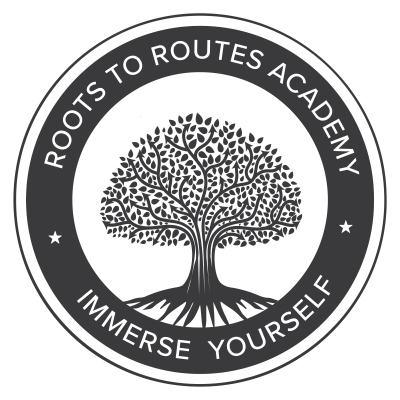Ontario High School Math: Why Students Need Extra Support to Succeed
January 13, 2025

It’s late in the evening, and Aaliyah is hunched over her math textbook. The numbers and symbols blur together as frustration builds in her chest. Today in class, the teacher sped through equations, assuming everyone had already mastered the basics. Aaliyah wanted to ask questions, but the fear of being judged kept her silent. Now, sitting at the kitchen table, she feels stuck. Her mom, who works two jobs, wishes she could help but doesn’t know where to begin. Aaliyah doesn’t just need to pass math—she needs to believe she can succeed in it.
This is a reality for many students across Ontario, particularly Black students. The traditional school system often overlooks their unique challenges, leaving them to struggle alone. It’s time to address these gaps and ensure every student, especially those who feel unseen, gets the support they need to thrive in math and beyond.
Why Math is a Critical Skill for Life
Math isn’t just about solving equations; it’s a gateway to opportunities. From careers in technology and engineering to managing personal finances, math skills are essential for success. For high school students in Ontario, math is a mandatory subject that builds the foundation for their future.
Yet, for many students, particularly Black students, this foundation feels shaky. Systemic issues in education, combined with personal and cultural barriers, make it difficult for these students to grasp math concepts fully. The result? Widening gaps in knowledge, lower confidence, and fewer opportunities in fields that require math proficiency.
The Unique Challenges in Ontario’s Math Curriculum
Ontario’s math curriculum presents several challenges that disproportionately affect Black students. Let’s take a closer look at these issues and their impact:
1. Rigid, One-Size-Fits-All Teaching Methods
In many Ontario classrooms, math instruction follows a standardized approach that doesn’t accommodate diverse learning styles.
- Students who excel with hands-on or visual learning methods may find themselves lost in a lecture-heavy environment.
- Black students often face additional barriers, such as implicit biases from teachers, which can affect how they are taught or supported.
2. Overloaded Classrooms
Large class sizes make it difficult for teachers to provide individualized attention.
- Students who struggle with concepts like algebra or geometry are often overlooked, as educators focus on keeping pace with the curriculum.
- This lack of support can lead to frustration, disengagement, and an aversion to math altogether.
3. Transition Gaps Between Elementary and High School
The shift from elementary to high school math can be jarring.
- High school introduces new topics like algebra, trigonometry, and advanced geometry, assuming students already have a strong foundation.
- For many students, gaps from earlier grades resurface, making it difficult to keep up with the increasing complexity.
4. Limited Focus on Conceptual Understanding
The Ontario math curriculum often emphasizes rote memorization over deep understanding.
- Students may learn formulas and procedures without grasping why they work or how to apply them in real life.
- This approach leaves students unprepared for higher-level math and problem-solving scenarios.
5. Credit Recovery Programs as a Quick Fix
While credit recovery programs help students pass courses, they often prioritize completing assignments over mastering the material.
- Students may advance to the next grade without the necessary skills, perpetuating a cycle of underachievement.
6. Lack of Representation in Content and Staff
Black students rarely see themselves reflected in the curriculum or among their educators.
- Lessons often exclude the contributions of Black mathematicians, and classroom examples rarely reflect Black cultural experiences.
- This lack of representation can make math feel irrelevant, contributing to disengagement.
7. Insufficient Resources for Struggling Students
Schools in underfunded areas often lack the resources to provide extra math support, such as tutoring or access to advanced learning tools.
- Black students, who are disproportionately represented in lower-income communities, face additional barriers to accessing these resources.
8. External Pressures on Students
Black students may also face external pressures, such as:
- Balancing schoolwork with household responsibilities or part-time jobs.
- Navigating systemic racism and societal stereotypes that lower expectations for their academic performance.
The Ripple Effect on Students and Families

When students struggle in math, the impact goes beyond the classroom:
- Low Confidence: Many students internalize their struggles, believing they’re simply “bad at math.”
- Missed Opportunities: Careers in STEM fields—where Black professionals are already underrepresented—become less accessible.
- Stress on Families: Parents often feel helpless, unsure of how to bridge the gap between school and their child’s understanding.
The cycle continues, with each missed opportunity widening the gap between potential and achievement.
Why These Challenges Demand Action
These systemic issues aren’t just academic—they have long-term consequences for students’ futures. Math is a foundational skill for countless careers, and without it, students may face limited opportunities in fields like science, technology, and finance.
Roots to Routes Academy stands as a beacon of hope, addressing these challenges head-on and ensuring that every student has the chance to succeed.
How Roots to Routes Academy is Changing the Game
Roots to Routes Academy goes beyond traditional teaching methods to create a learning experience tailored to the unique needs of Ontario’s Black high school students. Here’s how the Academy is leveraging innovative tools and approaches to revolutionize math education:
1. Personalized Learning with Advanced Technology
Roots to Routes uses cutting-edge Artificial Intelligence (AI) tools to identify each student’s learning needs. AI-powered platforms assess gaps in knowledge, track progress, and provide tailored recommendations. For example:
- Adaptive Learning Software: These systems adjust the difficulty and focus of math exercises based on a student’s performance. If a student struggles with quadratic equations, the software introduces simpler examples and gradually builds complexity.
- Data-Driven Insights: Educators can analyze real-time data to understand where a student is excelling and where they need additional support. This targeted approach ensures no student is left behind.
2. A Culturally Relevant Curriculum
Roots to Routes recognizes that traditional math lessons often lack context for Black students. By incorporating real-world scenarios that resonate with their identities, the Academy makes math more relatable and engaging.
- For instance, a lesson on percentages might involve calculating the costs of community events, encouraging practical skills alongside academic ones.
- Historical contributions of Black mathematicians are also highlighted to inspire students and give them role models in the field.
3. Expert Educators and Mentors
The Academy’s educators are not only subject-matter experts but also culturally aware mentors. They understand the systemic barriers Black students face and work to dismantle them through empathy, encouragement, and high expectations.
- Small class sizes foster closer student-teacher connections, creating an environment where students feel safe to ask questions and express their struggles.
4. Building Confidence and Resilience
Roots to Routes prioritizes the emotional well-being of students alongside academic success.
- Regular feedback sessions celebrate progress, no matter how small, to boost self-esteem.
- The Academy emphasizes a growth mindset, teaching students that mistakes are part of learning rather than a sign of failure.
5. Bridging the Gap Between School and Life
Roots to Routes prepares students not just for exams but for real-world applications of math.
- Financial literacy, coding, and problem-solving are integrated into the curriculum, giving students skills they can use in their daily lives and future careers.
- This comprehensive approach ensures students leave the program equipped for success in post-secondary education and beyond.
Why Parents Should Act Now
The earlier students receive the support they need, the better their chances of success. Don’t wait until math becomes a source of anxiety or limits your child’s opportunities. Roots to Routes Academy is here to bridge the gap and set your child on a path to achievement.
By enrolling your child in our program, you’re not just giving them better grades—you’re giving them a brighter future. Spots in our program are limited, so don’t miss this chance to invest in your child’s success.
Join the Roots to Routes Family Today
Math doesn’t have to be a struggle. With the right support, every student can unlock their potential and achieve greatness. Roots to Routes Academy is here to make that happen.
Click here now to learn more about our programs and take the first step toward your child’s success. Together, we can turn frustration into confidence and build a foundation for a lifetime of opportunities.
![]()
Related Posts
We’re So Glad You Made It Here
We know you might still have a few questions or concerns and that’s completely okay. We’re here to listen, to support, and to make sure you have all the information you need.
If something’s on your mind, don’t hesitate to reach out. Just send us a quick message, we’re happy to help.
Once you do, a member of our team will get back to you shortly and you’ll also start receiving our free, value-packed newsletters filled with tips, resources, and insights to support your child’s learning journey.

